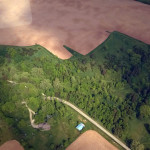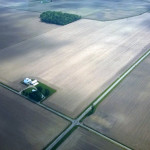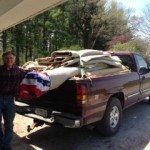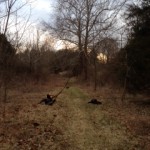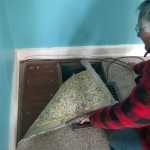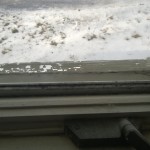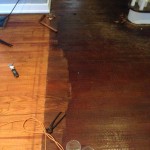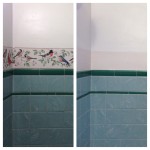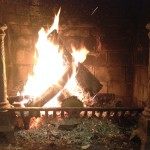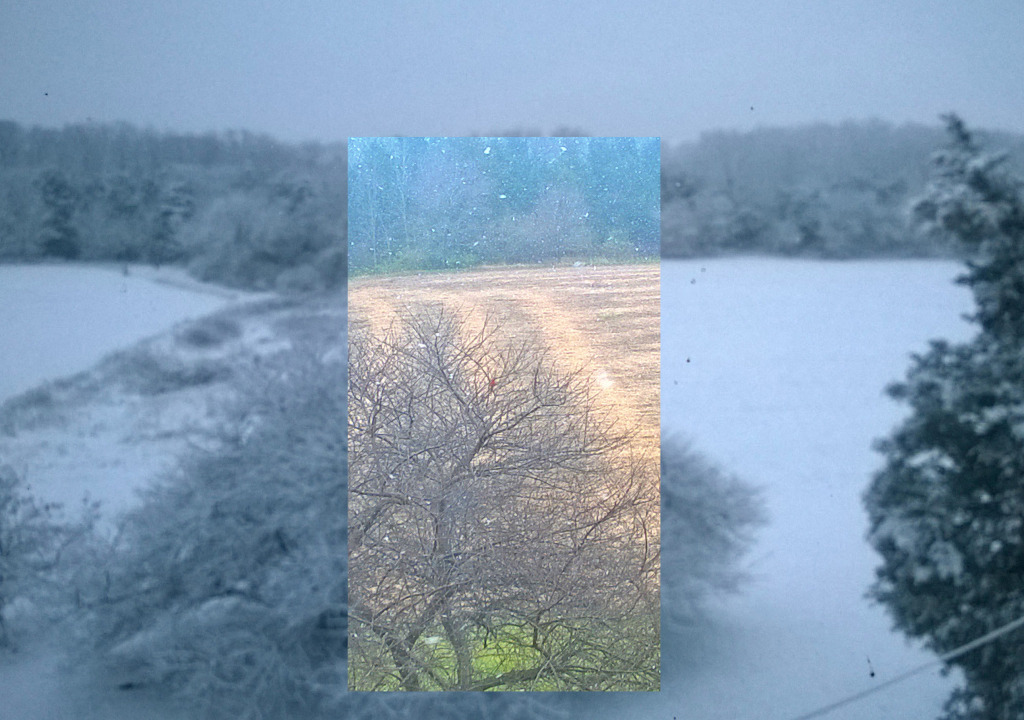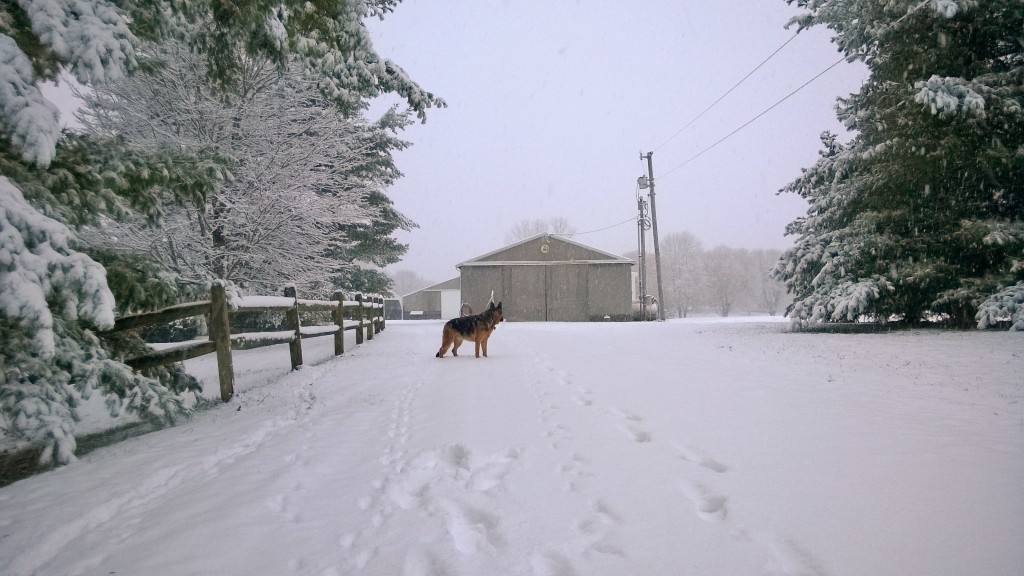Category Archives: Uncategorized
Updating our roadside image
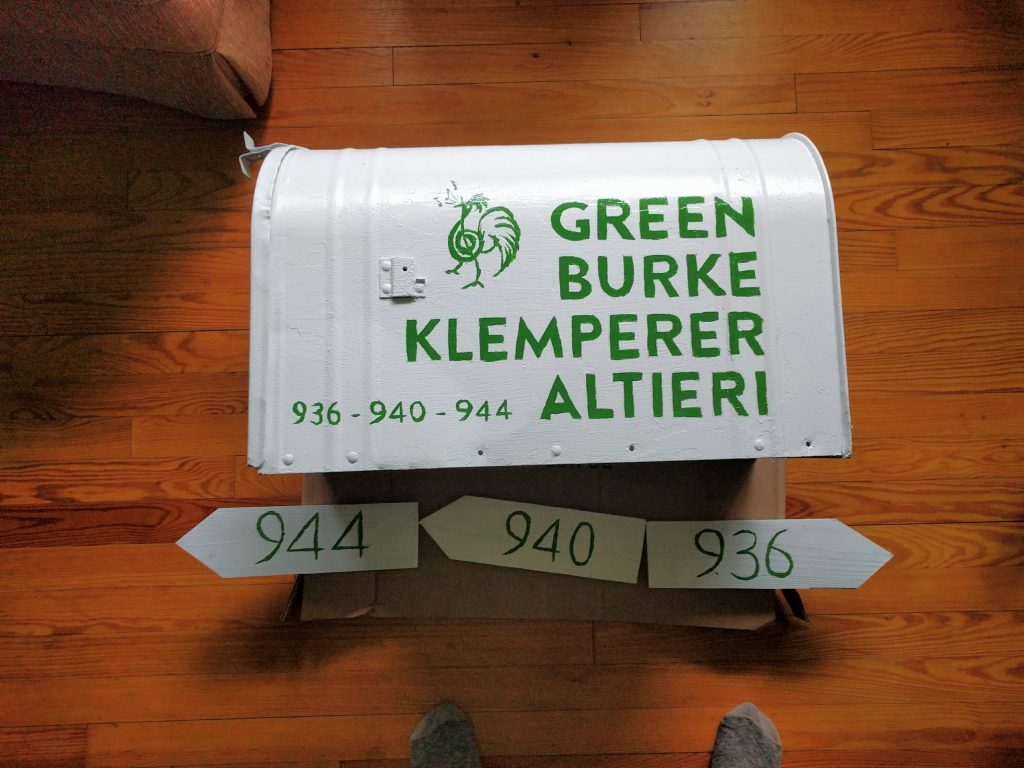
The old mailbox was in dire need of some love and attention. Though we found the same ‘rural galvanized jumbo mailbox‘ on amazon for $32.09, including shipping (you can’t survive in the country without Amazon Prime), we decided to keep our old one and just repaint it – too much stored up mojo.

As evidenced by the signature on the bottom, the original was installed by someone with the initials “B.G.” in 1973.
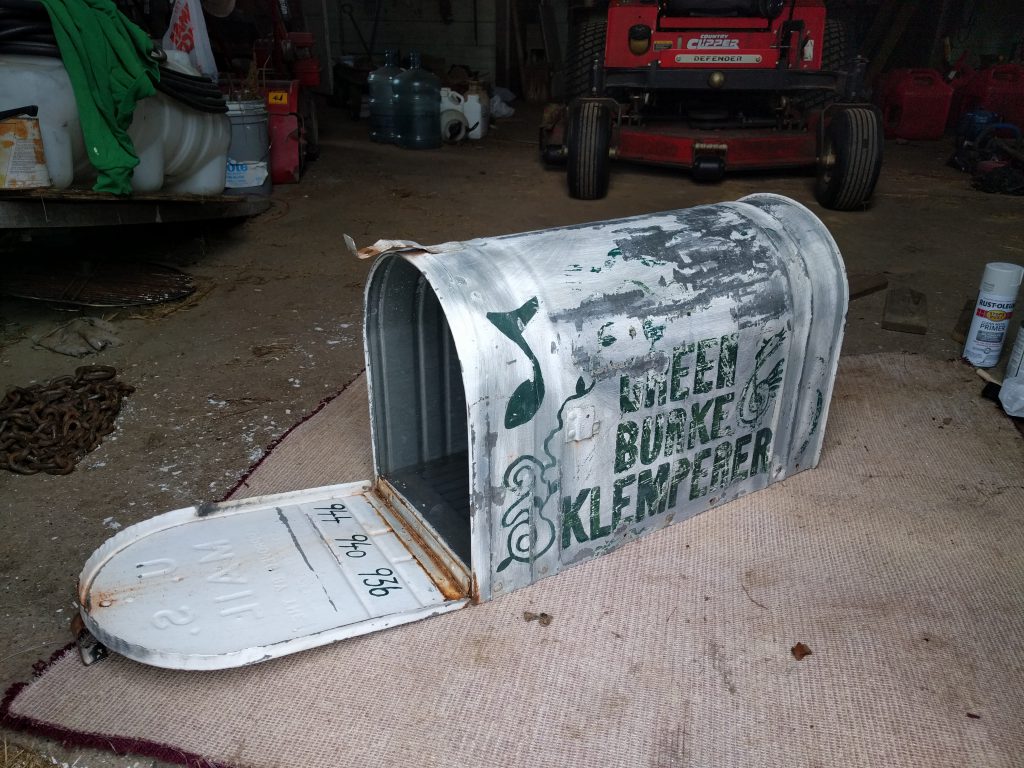
How the old box looked after removing the loose paint chips. Looks like some hippies had painted it.
About the typography
Brandon Grotesque is what I consider to be a very current (created in 2010), visually softer ripoff of one of the all-time classic fonts, Futura (created in 1927). It works well for poster-sized applications in all caps, and comes off as very clean. I used the bold variation for the main lettering, and projected it onto the box to pencil in the lettering for hand painting. We went with “John Deere Green,” since that was the only green they had at the tractor store where we happened to be shopping and, well, it is a farm.

Sample of Brandon Grotesque Bold

The mailbox in its current form. Memorize how it looks, in case you show up and think you’ve gone to a design convention accidentally.
Summer Music Events 2016
Chanticleer String Quartet 40th Annual Music Festival
Chanticleer Farm Aug 7th, 3:30 PM

Prophets Fest
Chanticleer Farm Aug 20th

Dealing with Bush Honeysuckle
What is Bush Honeysuckle?
Bush Honeysuckle is a general term for a couple of invasive, deciduous honeysuckle shrub species that are taking over our wooded areas with the speed of the Nazi invasion of Poland. Bush honeysuckles grow to heights of 6 to 20 feet (1.8 to 6 meters), with opposite, entire leaves, and often the older branches are hollow. They are ubiquitus, unapologetically unkempt, and play dirty (it is suspected that bush honeysuckles may produce allelopathic chemicals that enter the soil and inhibit the growth of other plants, preventing native plants from competing with the shrub).

Morrow Bush Honeysuckle
The spread of bush honeysuckle is generally accomplished by birds. Fruits are consumed readily upon ripening during summer. Bush honeysuckle plants commonly are found growing under tall shrubs or trees that act as perch areas for birds.
Bush honeysuckle is the first to grow leaves in the spring, blocking out all the other native species and ensuring its continued dominance. The Nature Conservancy gives a good synopsis of the situation:
According to Purdue Extension forester, Ron Rathfon, these invasives were planted throughout the state in the 1950’s and 1970’s. Several state forestry and wildlife agencies promoted bush honeysuckle as a great ornamental in home and urban landscaping. It was also touted as a great way to control erosion, and to create wildlife cover and food sources.
Unfortunately, they were wrong. Asian bush honeysuckles pose problems due to their rampant and aggressive growth behavior. They form dense thickets that block sunlight, and prevent anything from growing underneath. Thus, native plants are pushed out, while new shoots are able to grow due to the bush’s high shade tolerance.
What are we doing about it?
Well, it’s not generally fun or easy to get rid of them. The wood quickly dulls chainsaws and chippers, and they will grow back directly from the stump of a previously cleared shrub.

Fresh stump – it’ll just grow back next year
Since they are first to grow leaves in the spring, many official sources recommend hitting them with Roundup – one of the most popular defoliants – before any other plants come alive. We are generally adverse to overuse of herbicides, and have avoided this particular method so far, though it might end up being the only effective solution, since clearing bushes can often actually clear up space for more bushes to grow alongside the oe that will grow back anyway, compounding the problem.
 Bob discovered a more targeted approach by using Tordon on the stumps just after clearing a shrub, which prevents it from growing back the next year. So far, this has worked, though unfortunately still requires huge amounts of human labor to clear the shrubs in the first place.
Bob discovered a more targeted approach by using Tordon on the stumps just after clearing a shrub, which prevents it from growing back the next year. So far, this has worked, though unfortunately still requires huge amounts of human labor to clear the shrubs in the first place.
Since the south loop trail has been cleared, we now have better access to some parts of the woods that we previously unreachable by tractor, and so provides a decent launching-off point for shrub clearing sorties. The wood chipper allows us to remove the bulky dead bushes, and so far has been used to some effect on the trail surfaces.
With any luck and a lot of hard work, we hope that some day the better WWII metaphor will be that of Operation Barbarossa instead, and we can reclaim our wooded areas from these nefarious species.

Feeding bushes into the hungry chipper

Ariana sporting the latest in fashionable safety wear
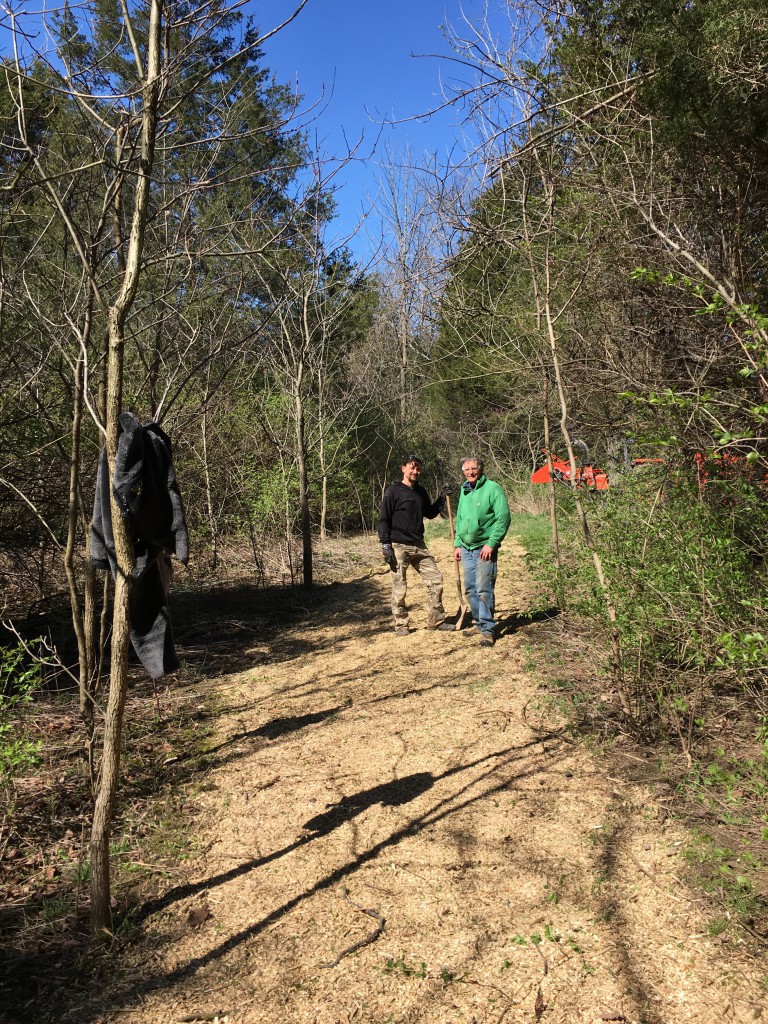
Nick & Bob showing off a previously muddy section of trail – thanks, Bush Honeysuckle!
A few pics
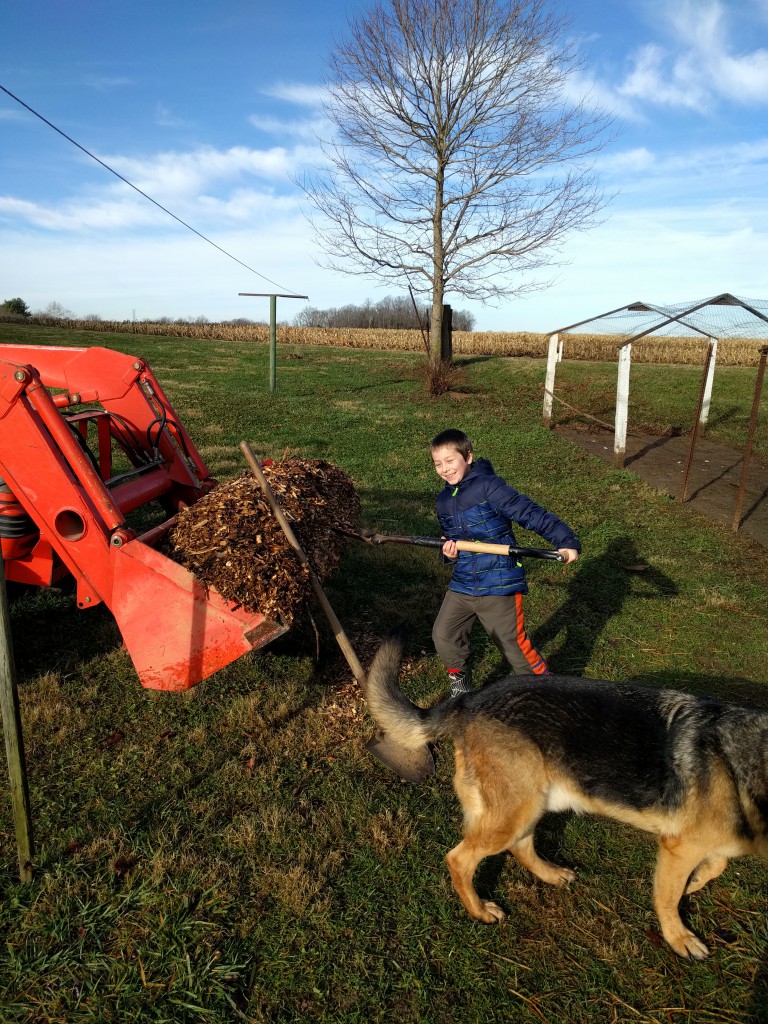
Oliver Green helping add mulch to the chicken run – Christmas 2015

Crazy Snow – Winter 2016

Sun and Snow – winter 2016
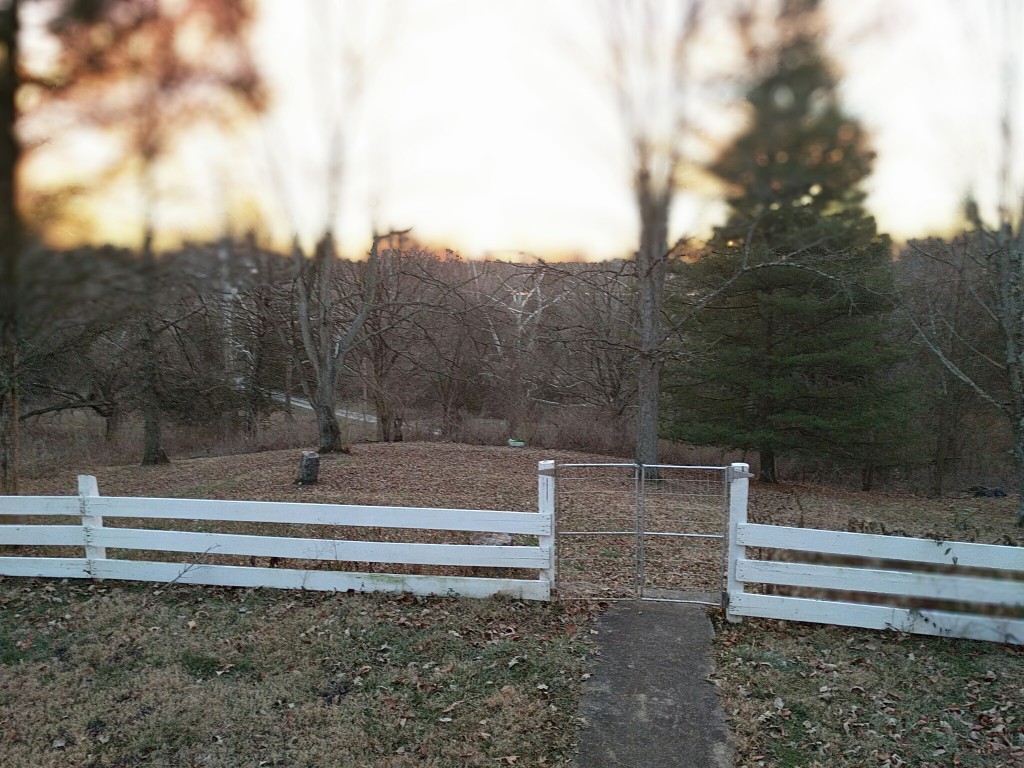
Snow melted sunrise – is spring coming?

Ariana escaping the cold – winter 2016

Winds of 33mph and snow – in the beginning of April 2016

Rain, Rain, Sun?
It has been the rainiest year so far in recent memory. A couple of weeks ago, after months of rain, the refrain of “the crops are loving it” changed to slightly more anxiety-tinged grumblings of “this is not good.”
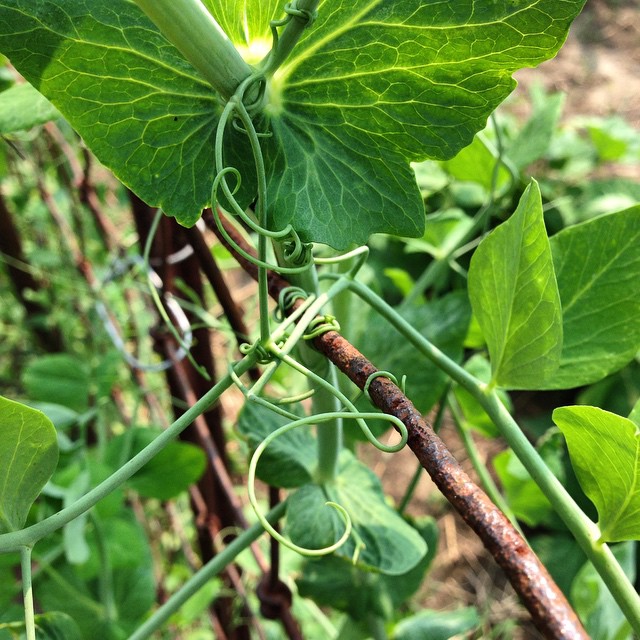
The sugar snap peas are doing ok with the rain, at least (photo: Ariana Altieri)
For comparison’s sake, here are other places around the world and their rainfall so far this year:
Rainfall from Jan 1-July 16, 2015
| Location | Rainfall |
|---|---|
| Richmond, IN – Chanticleer Farm | 28.1 in. (71.3 cm.) |
| West Warwick, RI – Quailridge | 20.14 in. (51.2 cm.) |
| NYC – Flatiron Bldg. | 12.16 in. (30.9 cm.) |
| Portland, OR – West Hills | 8.54 in. (21.7 cm.) |
| London, UK – Heathrow | 5.28 in. (13.4 cm.) |
| Phoenix, AZ – Downtown | 1.76 in. (4.5 cm.) |

Hens clucking about how the rain will never let up (photo: Ariana Altieri)
In other news, the Chanticleer String Quartet will be holding their 39th annual music festival soon, and Prophets Fest is still scheduled for mid-August. So let’s get some sun up in here!
Spring from the Ground & Air
- Main barnyard and pond from the west-northwest
- you can actually see the corn growing if you stare hard enough
- long lost cousins
- from the south
- OH MY GOD I THINK IT’S A DOUBLE RAINBOW
- a walk after wine tasting
- mom pronounces ‘peony’ like she’s from south carolina
- new land and the kids’ house from the east
- surrounded by chicks had a different meaning when I envisioned my future
- The Boston property from the south-southwest
This Old House – Part 2
Today is Saturday April 25th, and Spring is in the air. Since the last entry, Nick, Bob and Ariana have continued to work hard to get the house in great shape.
Some exciting things have happened, including more sanding, spackling, painting, caulking, clearing the garage of the old carpet, new kitchen floors, new carpet in the linoleum bedroom upstairs, installation of a new bathroom fan, tilling a new garden space, and more landscaping. The house looks amazing!
All these things have been completed just in time for Ariana to start her full time job at the local hospital as a cardiac nurse. Now we can sit back, relax, and enjoy our living space…at least until the next project presents itself. Guests welcome…
- The living room was the first room we completed. Now a relaxing, and inviting space.
- Kitchen floor before
- Removing linoleum lining the walls wasn’t easy.
- Patching peeling paint
- Priming, and ceiling painting day. Somehow Nick and Ariana’s relationship survived this long day.
- Kitchen floor after…cork 🙂
- Come share a meal with us.
- Listening room, toy room…not sure what it’s future holds, but it’s got gorgeous floors.
- Master Bedroom freshly painted “Liveable Green”
- Saying goodbye to years of carpet and dust mites while “flying the flag” for safety
- Trail maintenance, saving the trees from nasty vines
- Look, there is actually a path under there
- Installing a new fan for mold prevention
- We pretty much locked Bob in this bathroom for three days until it was bleached, sanded, primed, and painted. Many “choice” words were overheard during this time.
- So clean! No mold!
- Before…
- After
- Cozy guest room, with sewing nook.
- Upstairs bath before. Blue with mold on the ceiling
- Upstairs bath after. Clean ceilings, and yellow.
..
This Old House – Pt. 1
As some of you may know, Ariana and Nick have moved onto the farm officially as of Feb 1, and have begun the process of getting the 936 property in decent shape. This is the big white house formally known as “Oma’s House,” although since the current Oma of the farm is living in the red brick house, that title becomes at best confusing for the newest generation. A new title is still in the works.
Much credit to Bob, who has done a respectable job as landlord for the last 20 years or so, but as everyone knows, rentals inevitably get treated like rentals. Carpets get abused, plumbing issues don’t get reported and devolve into minor waterworks, paint jobs wear out or get redone tackily, and most things get 20 years of dirt ground into them.
Everyone is very optimistic about having family back in the house, and there is a long list of improvement projects already forming, each of which will give the property some much needed love and help maintain the property’s value as something closer to it was when Ellen lived there.
We have been keeping track of all of the man hours so far put into the house (99% of which have been done so far without paying for labor), as well as keeping a spreadsheet of all tasks completed. In the first month, 149 man-hours have been put into heavy cleaning, pulling carpets, repairing & painting walls, electrical fixtures, plumbing repair and more.
We’ll start out with a juicy gallery showing off how rough the house was on Feb. 1, and then drop in a few in-progress pics below.
- 20 year old chocolate sauce coating the bottom of the fridge
- Leaking, rotting underbelly of the kitchen sink
- broken kitchen drawer
- living room floor
- cracked ceiling paint…one of many in this state
- It’s easier to paint if you just go ahead and paint all the fixtures…
- bathroom cabinet…faux distressed look?
- Offensive teal wall color. I feel like I’m getting yelled at, but no one is in the room
- We’ll give them the benefit of the doubt, and say they were going for a “frosted look” here
- Hard to see the stage 3 level of people’s grime…this took 3 hours to clean
- dirty mildew grody floor
- This was real crisp in 1956
- Plastic tiles in the downstairs bathroom…falling off and cracking
- Smoothing out the walls
- This started as paint peeling. We’ve discovered what could be a parascope, a mouse waterslide, or an old kitchen vent. You decide.
- Exhibiting another crisp paint job
- Tip: latex paint on top of oil peels off in sheets…
- This unidentifiable liquid was on most doors, and many walls. We are still coming up with theories as to how this might occur
- One example of many painting faux pas
- Bye Bye Birdie
- 6 in total
- Broken bathroom fan, leading to cracked/moldy ceiling
- Transition from dining room to front hallway
- Cousin Scott Bartel pulling up staples from the old carpet
- Upstairs bath
- Cracked kitchen window
- Leaking tub…later fixed by Bob
- 45 year old carpet
To provide a little dose of optimism, here are some photos of our slow and steady progress.
- Moving Day
- Pretty dining room floors
- New kitchen sink
- So fresh, and so clean
- Taking time to enjoy a fire
- Switching out the lovely painted outlets
- Painting base molding
- A sneak peak at a more peaceful living room
- New plumbing under kitchen sink, removal of rotting wood base

Leaking, rotting underbelly of the kitchen sink. Yes, that’s rodent and ant poison on the left

New plumbing under kitchen sink, removal of rotting wood base

Teal walls. I feel like I’m getting yelled at, but no one is in the room

A sneak peak at a more peaceful living room
First Snow
Randy and his son Chris have been working overtime for the last two weeks trying to beat the weather. The crops were all harvested by Sunday morning, and the fields replanted by Sunday night, as the snow just began to fall. Everything is done just under the wire. The space heater is on in the pump house, and the snow plow is installed on the tractor. If the Farmer’s Almanac is correct (because… science?), we should brace ourselves for Snowmageddon 2015.
 Chanticleer Farms
Chanticleer Farms









